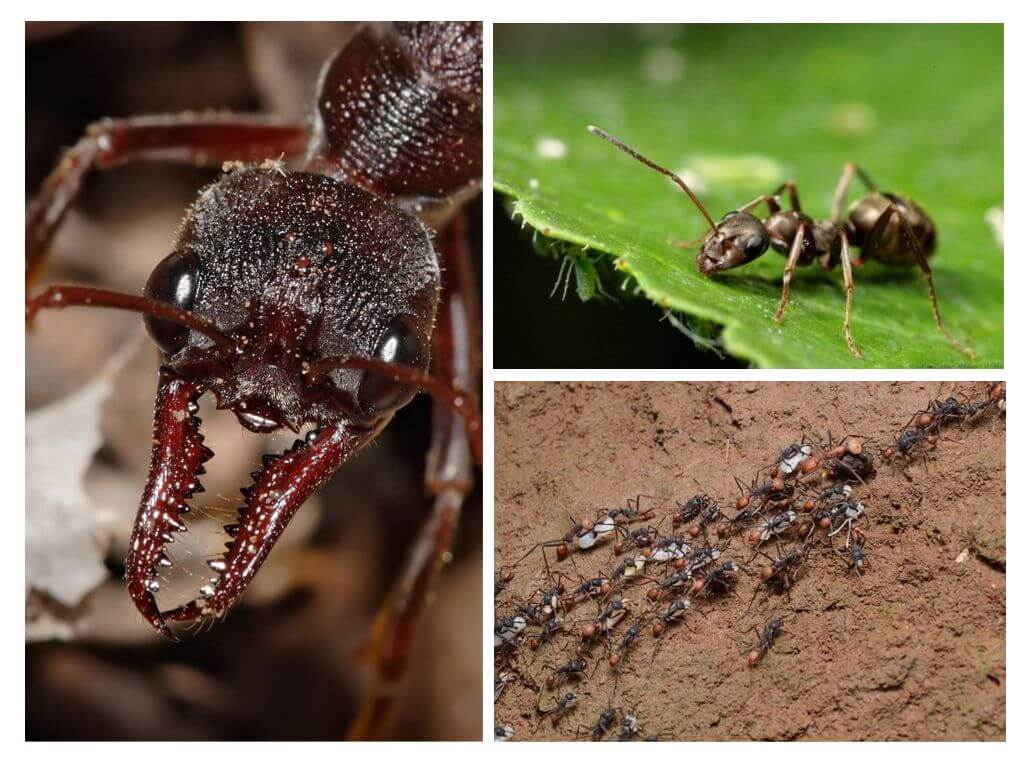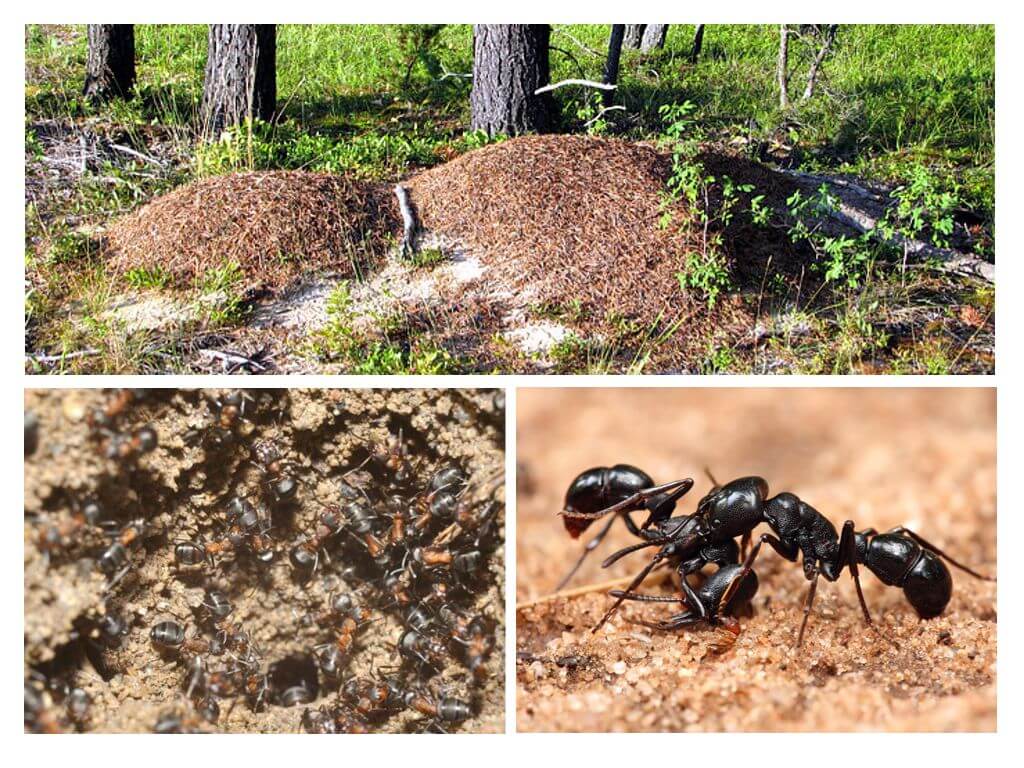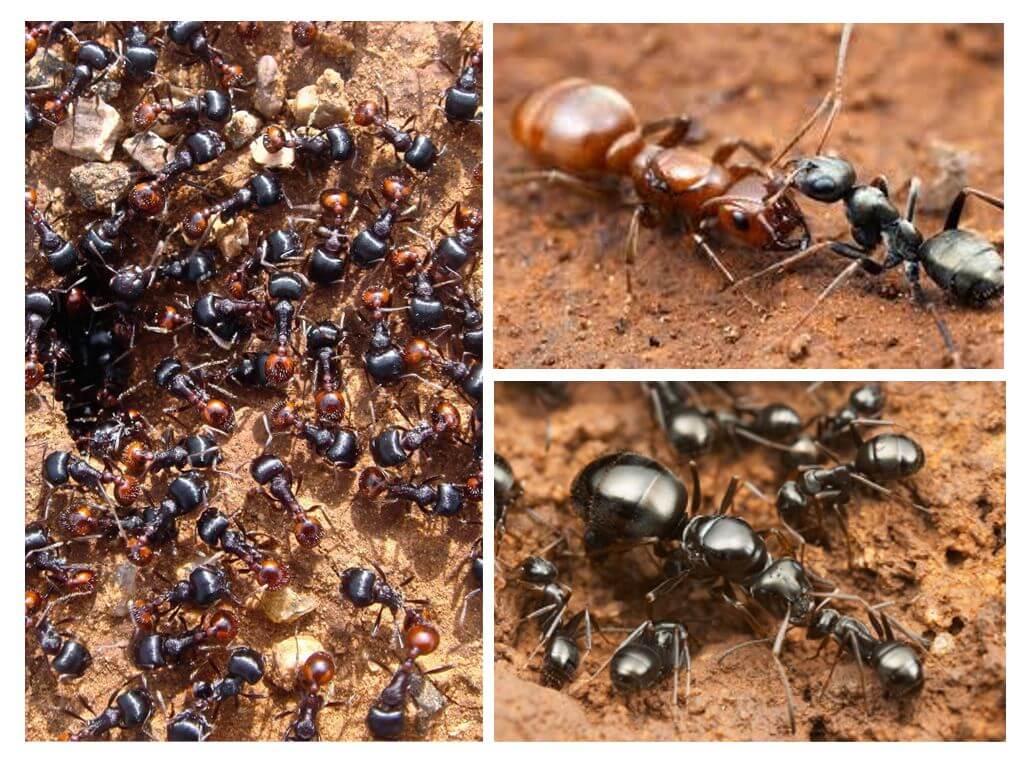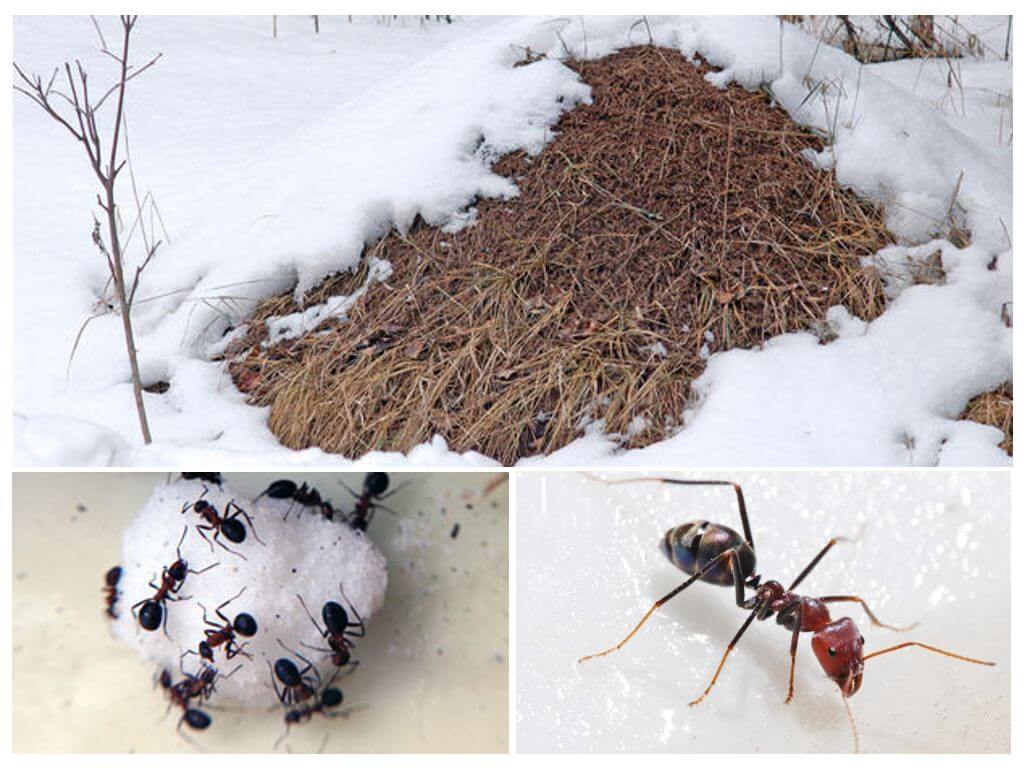The life of ants in nature is a unique phenomenon to which people never cease to be surprised. In the world there are about 10 thousand varieties of these insects. The total mass of all ants is equal to the weight of all people on the planet. The queen of the family lives about 25 years, the working individual - from 3 to 5 years.
Insect housing
Amazing architectural structure with many cameras, moves, floors, exits and entrances. Height anthill reaches several meters, diameter - about 5 m, with the size of one ant up to 8 mm. In one house there are millions of individuals. The entire colony has several million insects.
Outside is an embankment of earth with twigs, chopsticks, leaflets, needles, other building material that can overpower ant. The conical shape of the anthill warms up well in the sun, provides free air circulation, protects from raindrops.
Inside, everything is much more complicated. The structure of the anthill resembles a multi-story building with a huge number of apartments. Divided into 2 parts. The top is intended for life in the warm season, the bottom goes deep into the ground, provides a safe, safe wintering. Each of them has cameras reminiscent of separate rooms:
- Queen's apartments
- camera for eggs;
- room for larvae;
- pantry with food supplies;
- warehouse for waste, garbage;
- tomb;
- a room with aphids;
- bedrooms for wintering.
The cameras are interconnected by numerous moves. Entrances are guarded, tightly closed for the winter.

Families of ants are constantly replenishing; expansion of housing is required. Construction continues every year. In case of danger - in case of damage, destruction of the anthill, residents immediately begin to build a new building, dragging food supplies there, larvae, eggs.
Interesting!
The largest anthill found in the Tomsk region. Height is 3 m, diameter - 5 m. It was built approximately 25 years. Nearby members of this family are building new housing, identical in appearance.
Relationship inside
The life of ants in an anthill is strictly regulated by local laws.
- At the head of the hierarchy is uterus - the queen. Her responsibilities include reproduction of offspring. Every week, the female lays eggs, working individuals drag them into special chambers, provide favorable conditions for development. The queen lives up to 25 years.
- A small proportion of ant society are young males. Their fate is foretold. After fertilization, the females die within 2 weeks.
- The main part of society is workers. Females are formed, incapable of fertilization. Life span depends on the species, habitat.
Interesting!
Female, male larvae hatch from the eggs. Which of them will be who in the future depends on nutrition, diet. Ants independently regulate the number of female queens, working individuals, providing different conditions for the larvae.

Castes of ants do not change, but at a young age individuals are given the opportunity to test themselves in any field. The lowest caste is the builders. These include those ants who could not prove themselves in another area. In addition to this profession, there are many others in the ant family:
- scouts;
- security guards;
- the military are invaders;
- food procurers;
- babysitting
- storekeepers;
- millers or shepherds;
- midwives;
- nurses;
- transporters.
In the life of ants, powers and responsibilities are clearly divided. Periodically you have to confirm your status. Ants arrange a showdown among themselves, demonstrating their superiority.
Interesting!
In the life of an ant there is a constant process of training, information transfer. Insects are capable teachers and students. Adults pass on their experience to young, showing how to act. If an adult ant finds food, it leads along the same trajectory of a young student so that he himself can find prey. The same interaction is observed in any area of ant life.
Wintering
How ants live in cold weatherinteresting too. Since mid-summer they have been stocking up food for the winter. With the first frosts, all entrances are tightly closed. As the temperature decreases, they move to the lower part of the anthill.

If winter is not so harsh, life inside does not stop. Everything is on its own, only the fertility of the female is reduced. Insects even have the ability to go outside in search of food. In severe frosts, ants move to bedrooms. Their metabolism slows down, the need for food disappears, the insect stops moving. People characterize this state of deep sleep.
Life in the anthill is activated with the onset of heat. The soil warms up, the ants gradually move to the upper floors, open the entrances.
Good for nature
In an anthill, several ants act as scouts. They crawl around the district in search of food, inspect the territory for the presence of enemies, danger. Ants act as food for other insects, birds, some animals. Always be on the lookout.
Ants bring nature tremendous favor. They are called the orderlies of the forest. The production of 1 large anthill per day is about 7000 caterpillars, 28000 pupae, 3000 butterflies of an oak leaflet, 4000 pine scoops. During the summer, working ants bring up to 60 thousand plant seeds, 19 buckets of juice, 7 million insects to the anthill. Most of these stocks go to larvae feeding.
Small creatures improve soil quality. They fight plant pests, loosen layers. Aphids are used as a "pet." They feed it with leaves, collect a sweet substance that releases an insect on its body.
In our area, ants help many plants grow. Plantain, violet, snowdrops, celandine, etc. are sown.
On a note!
Mankind appreciated the beneficial composition of ant poison. The substance is used for the preparation of medical supplies. Used to treat the circulatory system, joints, musculoskeletal system. The poison contains a huge amount of antibiotics that destroy pathogenic microorganisms.
The life of ants in nature is interesting, attractive, amazing. However, there are families that harm crops, build nests in human housing. In this case, the most sophisticated destruction methods either expelling pests into the natural environment




